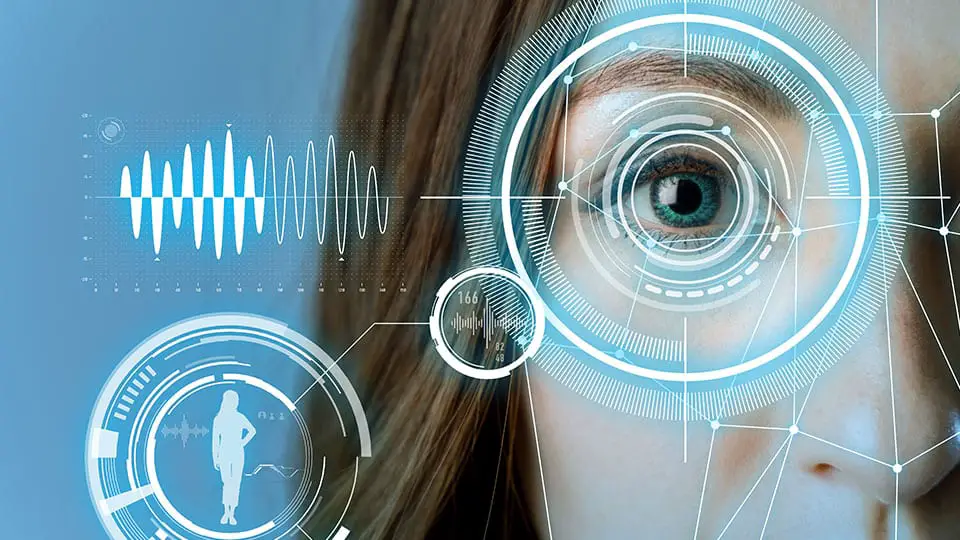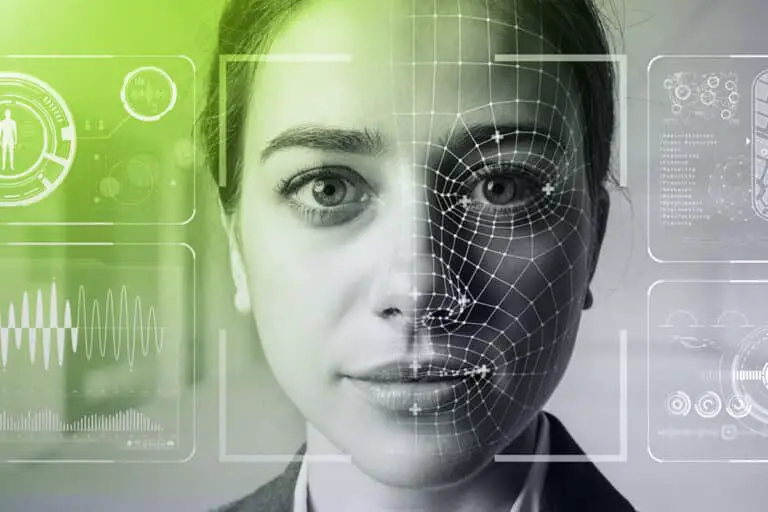Introduction
What Is Android Biometrics: Android biometrics refers to the use of biometric authentication methods on Android devices. Biometrics is a technology that uses unique physical or behavioral characteristics of an individual to verify their identity. With the increasing need for secure authentication methods, biometrics has gained popularity in various industries, including mobile devices.
Fingerprint recognition is one of the most widely used biometric authentication methods on Android devices. It involves scanning and matching the unique patterns and ridges on a person’s fingertip to verify their identity. This method is not only fast and accurate but also offers a high level of security as each person’s fingerprint is unique.
Facial recognition is another popular biometric security authentication method that uses the unique features of a person’s face to verify their identity. Android devices equipped with facial recognition technology use front-facing cameras and advanced algorithms to capture and analyze facial features such as the distance between the eyes, the shape of the nose, and the contours of the face.

Where is biometrics on Android?
Biometrics on Android refers to the use of unique physical or behavioral characteristics of an individual to authenticate their identity. These characteristics can include fingerprints, facial features, iris patterns, and voice recognition. The biometric authentication feature on Android is typically found in the device settings under the security or lock screen options.
Fingerprint recognition: One of the most common biometric authentication methods on Android is fingerprint recognition. Many Android devices have a fingerprint sensor embedded in the home button or on the back of the device. Users can register their fingerprints in the device settings and use them to unlock their devices or authorize transactions.
Facial recognition: Another popular biometric authentication method on Android is facial recognition. Android devices with front-facing cameras can use facial recognition technology to identify and authenticate users. This feature analyzes the unique facial features of the user and matches them with the registered data to grant access.
Voice recognition: Voice recognition is another biometric authentication method available on Android. This method is particularly useful for hands-free authentication.
Are Android biometrics secure?
Android biometrics refer to the use of biometric authentication methods, such as fingerprint scanning or facial recognition, on Android devices. These methods have become increasingly popular as a convenient and secure way to unlock devices and authenticate users. However, the question remains: are Android biometrics secure?
Android biometrics have come a long way in terms of security. In the past, there were concerns about the reliability and accuracy of these authentication methods. However, with advancements in technology and the implementation of robust security measures, Android biometrics have become much more secure.
One of the main advantages of Android biometrics is the uniqueness of each individual’s biometric data. Another important aspect of Android biometrics is the encryption of biometric data. Android devices use strong encryption algorithms to protect biometric data stored on the device.
However, it is important to note that no security measure is completely foolproof. While Android biometrics have become more secure, there are still potential vulnerabilities that could be exploited. For example, hackers may attempt to bypass biometric authentication by using advanced techniques or by exploiting software vulnerabilities.
Should I use biometrics on my phone?
Biometrics refers to the use of unique physical or behavioral characteristics to identify individuals. In recent years, biometric technology has become increasingly popular, particularly in the realm of smartphone security. Many modern smartphones now offer biometric authentication options, such as fingerprint scanners or facial recognition, as an alternative to traditional passcodes or PINs. However, the question remains: should you use biometrics on your phone?
There are several advantages to using biometrics on your phone. Firstly, biometric authentication methods are generally more secure than traditional passcodes or PINs. This makes it significantly harder for unauthorized individuals to access your phone and the sensitive information it contains.
Secondly, biometric authentication is often more convenient and user-friendly. With biometrics, you don’t have to remember and enter a passcode every time you want to unlock your phone. Instead, you simply need to place your finger on the scanner or look at the front-facing camera, and your phone will unlock almost instantly. This can save you time and make the overall user experience more seamless.
However, there are also some potential drawbacks to consider. One concern is the issue of privacy. When you use biometrics on your phone, you are essentially providing your unique physical or behavioral data to the device.
The decision of whether or not to use biometrics on your phone ultimately depends on your personal preferences and priorities. Biometric authentication offers enhanced security and convenience, but it also comes with potential privacy and reliability concerns. It is important to weigh these factors and make an informed decision based on your individual needs and comfort level with biometric technology.
What is the purpose of using biometrics?
Biometrics refers to the measurement and analysis of unique physical or behavioral characteristics of individuals. These characteristics can include fingerprints, facial features, iris patterns, voice patterns, and even typing rhythms. The purpose of using biometrics is to provide a secure and reliable method of identifying individuals and granting them access to certain resources or systems.
Another purpose of using biometrics is to improve convenience and efficiency. Biometric systems can quickly and accurately identify individuals without the need for them to remember passwords or carry physical identification cards. This can save time and reduce the frustration associated with forgotten passwords or lost ID cards.
By using biometric characteristics to verify the identity of individuals, organizations can reduce the risk of identity theft and other forms of fraud. This can help protect individuals’ personal information and financial assets.
By using biometric systems to track individuals’ access to certain resources or systems, organizations can have a clear record of who accessed what and when. This can be particularly useful in investigations or audits, as it provides a reliable way to determine who is responsible for certain actions or events.
How many fingerprints can Android store?
Android smartphones may store many fingerprints, making it easy to unlock and use apps and functions. The number of fingerprints an Android smartphone can store depends on its model and OS version.
Advanced fingerprint sensors can store multiple fingerprints on most Android smartphones and tablets. Biometric sensors gather and analyze fingerprint patterns and store them securely on the device. Users can unlock their devices by touching the sensor for fast and safe authentication.
Android devices typically save five to ten fingerprints. Users can register their thumb, index finger, or any other finger to unlock their device.
Android Biometrics: Secure Authentication with Unique Traits
Multi-user fingerprint registration is also possible on Android devices. This is useful for family-shared or professional devices with several users. Each registered user can store their fingerprints on the device to unlock it.
Fingerprint storage may vary amongst Android devices. Some gadgets can register more fingerprints due to their storage capacity. For security, Android may limit the amount of fingerprints stored.
Android biometrics use sensors and algorithms to gather and evaluate unique physical or behavioral traits. Fingerprints, face features, and voice patterns are turned into digital templates that may be safely saved and compared for authentication.
Android prompts users for biometric data to unlock their smartphone or access apps and services. The device’s biometric sensor collects data and compares it to templates. Users are allowed access if they match; else, they are denied.
What are the different types of biometric authentication available on Android devices?
Android devices offer several types of biometric authentication methods, including fingerprint recognition, facial recognition, iris scanning, and voice recognition. Facial recognition uses the device’s front camera to capture and analyze the unique features of the user’s face. Iris scanning involves capturing the patterns in the user’s iris, while voice recognition analyzes the unique characteristics of their voice.
Android devices often support multiple biometric authentication methods, allowing users to choose the one that suits them best.
Can Android biometrics be used for secure authentication?
Yes, Android biometrics can be used for secure authentication. Additionally, Android devices use strong encryption algorithms to protect the biometric templates and ensure their integrity.
Furthermore, Android’s biometric authentication methods have undergone rigorous testing and certification processes to ensure their reliability and security. These methods have proven to be highly accurate and resistant to spoofing attempts. However, it is important for users to set up their biometric authentication properly and follow best practices, such as regularly updating their device’s software and not sharing their biometric data with unauthorized parties, to maintain the security of their authentication.
Are there any limitations or vulnerabilities associated with Android biometrics?
Android biometrics has limits and vulnerabilities. False positives and negatives are major drawbacks. False positives and negatives arise when the system misidentifies an authorized user or fails to recognize one. Changes in appearance, environmental circumstances, or faulty sensors might create these inaccuracies. Biometric authentication accuracy on Android devices varies with device and implementation.
Spoofing is another drawback. Facial and fingerprint data can be faked to trick the system. Use high-resolution photos or 3D models to do this. Liveness detection, which ensures that biometric data is from a real person, is widely used on Android devices to mitigate this problem.
How does Android ensure the privacy and security of biometric data?
Android takes several measures to ensure the privacy and security of biometric data. Firstly, Android devices store biometric data in a secure enclave, which is a separate hardware component that is isolated from the rest of the device’s operating system. This ensures that the biometric data is protected from unauthorized access or tampering. Additionally, Android uses strong encryption algorithms to encrypt the biometric data both at rest and in transit, further enhancing its security.
Furthermore, Android provides a robust permission system that allows users to control which apps have access to their biometric data. When an app requests access to biometric data, the user is prompted to grant or deny permission. This ensures that only trusted apps with a legitimate need for biometric data can access it. Android also requires apps to follow strict security guidelines when handling biometric data, such as using secure channels for communication and implementing strong authentication mechanisms.

Conclusion
Android biometrics refers to the use of biometric authentication methods on Android devices. Biometrics is a technology that uses unique physical or behavioral characteristics of an individual to verify their identity. Android devices have integrated biometric sensors such as fingerprint scanners, facial recognition cameras, and iris scanners to provide secure and convenient authentication options for users.
One of the main advantages of Android biometrics is its convenience. Users no longer need to remember complex passwords or patterns to unlock their devices or access certain applications. With biometric authentication, a simple touch of a finger or a glance at the camera is all that is needed to verify the user’s identity. This not only saves time but also reduces the risk of forgotten passwords or unauthorized access.
In addition to convenience, Android biometrics also offers enhanced security. Biometric authentication methods are difficult to replicate or fake, making them more secure than traditional password-based authentication.
Furthermore, Android biometrics can be used for a wide range of applications beyond device unlocking. Many banking and financial apps now offer biometric authentication as an additional layer of security for transactions. Biometrics can also be used for secure access to sensitive information or documents stored on the device. This versatility makes Android biometrics a valuable tool for protecting personal data and ensuring privacy.
Android biometrics is a powerful technology that combines convenience and security. It offers users a seamless and secure way to authenticate their identity using unique physical or behavioral characteristics. With the increasing integration of biometric sensors in Android devices, biometric authentication is becoming more prevalent and widely adopted. As technology continues to advance, we can expect to see further advancements in Android biometrics, providing even more secure and convenient authentication options for users.

